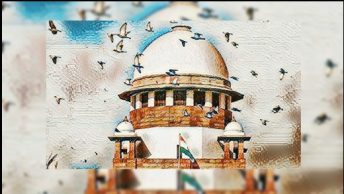Ed Note: We are hosting an international blog symposium on India and Global Decline in Democracies as a part of our New Scholarship initiative. We will be discussing Professor Tarunabh Khaitan’s article, which he introduced here. More information on the symposium can be found here. This post is the third response in the series, by Professor Samuel Issacharoff.
I teach my students that the American presidential election of 1800 introduced the modern democratic era. For the first time, a broad polity replaced a head of state with a rival as a consequence of electoral choice. True only 5 of the 14 states chose their electors directly, but even with indirect selection the idea that a head of state might surrender control of the military and the trappings of state power to a rival ushered in a period of democratic possibility. In turn, the question I pose is what allows that commitment to persist? The short answer, unsatisfying because it assumes the preexistence of the predicate conditions, is two-fold. First democracies require repeat play, not simply in terms of the observed Przeworski definition of two complete handovers of power, but in the sense that the political opposition is understood to be part of a legitimate shared enterprise. Second, the conquest of power must be limited institutionally so that a new governing coalition can indeed alter direction, but not the fundamentals of power. Democratic majorities should prevail, but not too much.
Tarunabh Khaitan’s article, and so much of his recent writing, deepens this understanding in two critical ways. First, he looks to the institutional forms by which power is not only exercised but constrained. Second, he adds an indispensable close-quartered narrative of how the modern populist era threatens to unwind the prerequisites for democracy to be entrenched. In this regard Killing a Constitution joins with Wojciech Sadurski’s Poland’s Constitutional Breakdown as an indispensable account of how a democracy may be unwound. Scholars devote much attention to the benefits or demerits of presidentialism or parliamentarism, various forms of proportional representation, and levels of judicial review, the debates that may appear as an academic inquiry into variety among Tolstoy’s happy families. The unhappy democracies, from Poland to Hungary to India and (allow me my parochialism) the United States, each face unwinding in distinct ways.
The introductory exposition of the forms of democratic constraints, even if recognizable, takes the incisive and directed form that we have come to expect from Khaitan’s writing – an unfair consequence of allowing the ease and economy of presentation to mask the tremendous analytic force that lies behind. Here the categories are the vertical accountability through periodic elections, the horizontal constraints of separation of formal powers, and the diagonal (nice move) domain of civil society ability to marshal soft power against executive aggrandizement. Together these constraints work to “assure democracy over time,” the critical attribute of democratic governance. In the post-1989 expansion of democracy, the question was how democracy could take root amid incomplete institutionalization of these mutually enforcing pillars. In the modern populist era, the challenge is to keep a Modi or Trump or Erdogan or Orban from collapsing institutional power into unified power in the hands of a single executive actor. Notably, as Khaitan acknowledges, this is not the form of military government of the 20th century, nor the ideological forms of total rule, but the result of elected heads of state moving against the system that ushered them into power.
Each of these accountability mechanisms is under attack in all the modern populist regimes. That much is familiar to all, but the familiarity should not be confused for the fine-grained details of how democratic erosion fits any particular national stage. The article is too rich and nuanced for this short response to do justice to all the insights and how they fit the systematic undermining of the three pillars of democratic constraint. Instead in the limited space for this commentary, allow me just three points that I found particularly striking in Khaitan’s discussion.
First, although the title of the article speaks about the death of a constitution by a thousand cuts, the article is decidedly not about constitutional law, save for a proper recognition of how specific constitutional defects might invite one or another of the abuses advanced by the Modi regime. Perhaps too much of the comparative legal work on the current populist challenge is written by constitutional lawyers (I include myself in the culpable group) for whom, not surprisingly, constitutional law is the entry point for analysis and apex constitutional courts are an outsized actor. There is little attention directed to “abusive constitutionalism” or “unconstitutional constitutional” amendments. As significant as these issues may be, they are not the driving force in many of the world’s backsliding regimes. What is striking is that the threat to democracy comes not from constitutional politics primarily, but from the quotidian mix of statutory, regulatory, and decretal authority, usually exercised in recognizable forms without constitutional change. The fact of ordinariness is what makes the present situation so fraught, for it is the mix of powers being deployed rather than a redefinition that is the driving concern.
Second, the mechanisms that Khaitan identifies are primarily what I term “intralegal,” rather than the extralegal resort to violence that characterized the repressive regimes of the 20th century. This is not to say there is no violence or that there is no resort to intimidation by other means. But the primary mechanisms are of the sort that fall within patterns of seemingly legal rules. When Modi refuses to recognize the legal role of the head of the opposition, or marginalizes members of the Cabinet, or attacks governors from other parties, these are in their whole efforts to erode one pillar of executive accountability. But they are familiar legal/political maneuvers that may exist in a democracy, except in their composite effect. To make the obvious point, non-recognition of government power of the opposition (e.g., Biden), rejecting participation by Cabinet members, and attacking dissident governors of other states (e.g., Michigan, New York) are recurring patterns in compromised democracies. All at the margin in terms of legality, but all devastating in their totality.
Third, there is the difficult issue of many of the avenues being pursued having resonance in customary practices in other democracies. Britain may have a Shadow Cabinet, but most democratic systems do not and so an attempt to erode such rights of the opposition does not have the same deep resonance as the 20th century violation of human rights. Many democratic countries have federalist structures, but New Zealand does not. This allows contemporary repression to claim democratic precedence (and precedents) in patterns found acceptable elsewhere, what Alvin Cheung incorporates within the literature on “isomorphic mimicry.” The combination of constraints works differently depending on the national setting. But a regime that incorporates the worst features from all the world’s democracies risks democratic collapse, even without a coup or formal constitutional alteration.
This is the tragic world we confront, and the one that Khaitan illuminates in the Indian context.






Can you be more specific about the content of your article? After reading it, I still have some doubts. Hope you can help me.